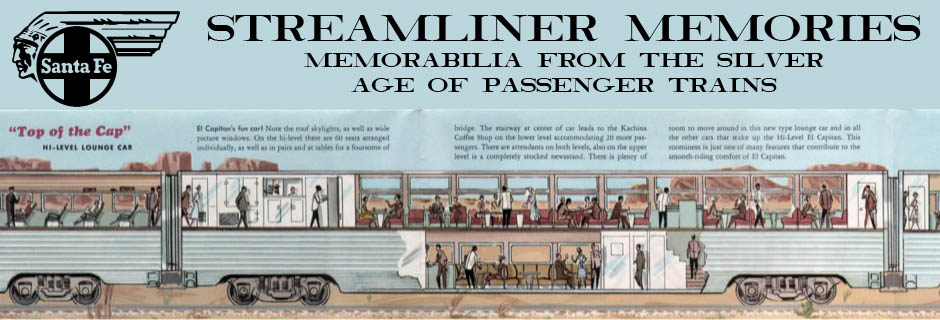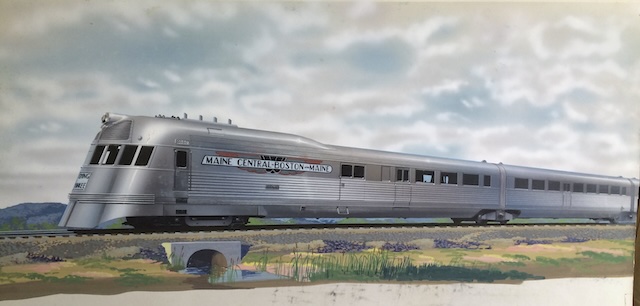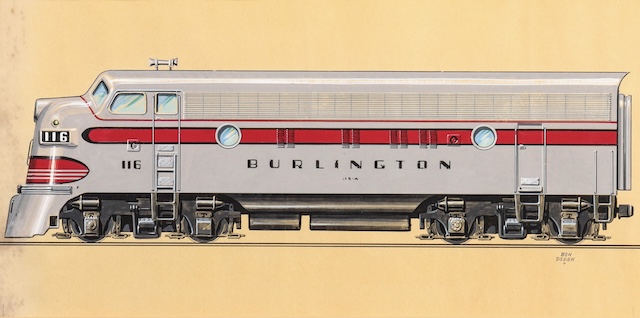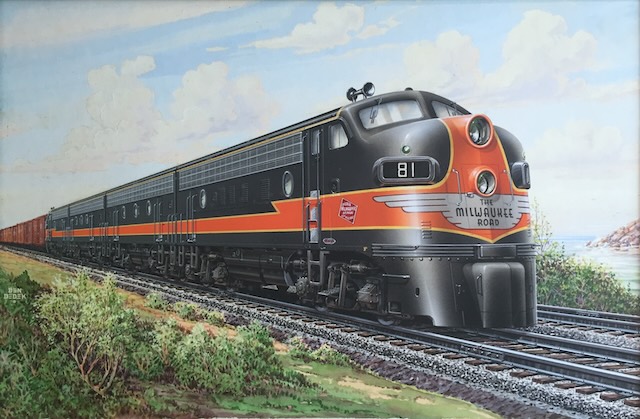Americans traditionally spend Thanksgiving with their families, but a few lucky people occasionally spent a Thanksgiving on board a train. The luckiest got to spend Thanksgiving on a train with a fancy dining car such as the City of Los Angeles. These cards would have been put on tables offering a special Thanksgiving dinner to such travelers.
 Click image to download a 788-KB PDF of this postcard.
Click image to download a 788-KB PDF of this postcard.
The first is printed on a paper with a nice background texture. It offered an elaborate dinner starting with a fruit cup, onion soup, or tomato juice, then a choice of olives or celery, a main course of turkey with dressing and cranberry sauce, mashed potatoes and three other vegetables, pineapple and cottage cheese salad, rolls, a choice of desserts, and beverage, all for $3. Continue reading









